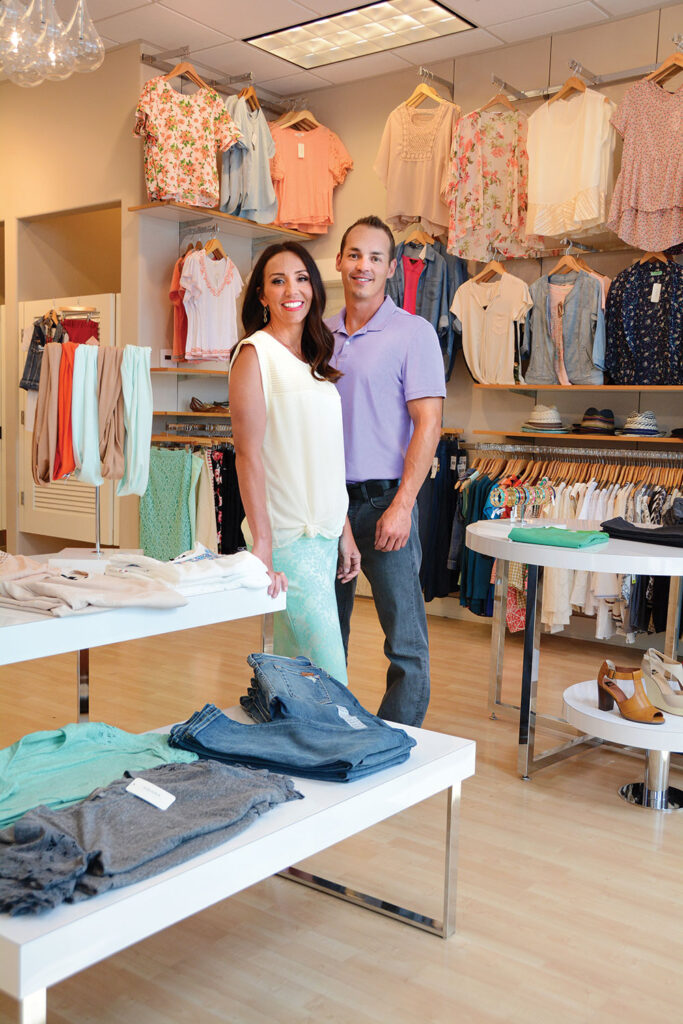Three-year growth 106%

The growth at Amara Day Spa, Salon & Boutique has been a thing of beauty. Ten years ago, Leigh Bennett was an aesthetician who worked out of her Orem basement. She named her business Amara — a name she found in her sister’s baby book (it means beauty, naturally). But there are no baby steps here. Amara has expanded nearly every three years, and is now a $3-million company with 95 employees who perform and perfect spa treatments, hair services and boutique sales. “We are never content,” says Leigh, who runs the business with her husband, Tyler. “If your foot is not on the gas, someone will pass you up. We never have the attitude that ‘we’ve arrived.’” Read on to learn why this five-time UV50 company values style AND substance, why they never take a day off, and why running a day spa is no, well, day at the spa.
We started Amara in the basement of our little Orem house. We bought QuickBooks, learned how to use QuickBooks, and then totally self-funded the company. We were there two and a half years.
Then our family moved to Lindon, and we built out our home’s 2,300-square-foot basement for Amara. We made a super wide driveway with parking lines so we could fit seven cars and still have access to our garage. We had nine employees, and we thought we’d be there forever.
We were there two years — way too busy for little farm town Lindon! We moved to our current space in Orem, and keeping on trend, we expanded two and a half years later by adding on the space next door. We now have almost 100 employees.
We lived at the store during the expansion — and never closed a day. We didn’t have an option. Where would our girls go? Where would our clients go? Our industry stays open — it’s as simple as that. So during that four-month period, we were open for business during the day, and the construction crew would get there at 8 or 9 at night. We hardly slept, and we were constantly cleaning up enough to get to the point where we could reopen the next morning. It was nutso.
Our growth requires people, which is tough. We can’t just call the manufacturer and produce more product. So what’s it really like to grow? It’s one employee and one guest at a time. We grow one haircut at a time. We grow one eyebrow wax at a time. We grow one good experience at a time. Every guest gets a smile and gets called by name. What’s good for the guest is what’s good for us. You have to have employees buy into the vision, so we are obsessive about training. We want to communicate that there’s a rhyme and a reason to why we’ve been successful. Nothing has been random.
We’ve taken a business approach to running the salon. We have the glamour, but we have the systems and statistics to back it up. The profit margins in salons and spas are slim. We know if a stylist uses one extra pump of conditioner, we just lost money. If extra color goes down the drain, we just lost money. And if we didn’t pay attention to these details, we’d be a here-today-gone-tomorrow story.
Pricing is not a big challenge for us. It’s part of our culture. We don’t discount. In fact, we raised our prices all through the recession. We create value — and we raise our prices based on performance rather than tenure. We take emotion out of it, and we have systems that show us how many people come back to each stylist. The data dictates what the demand is. It’s much like an attorney or CPA. They can’t charge $500 if there’s no demand for their time. And our stylists are in demand.
We try not to be too corporate-y when we can help it. We love our girls, and we want our staff to feel like a family and love coming to work. We invest in the overall quality of their lives. For example, we offer a free personal finance class. If we can help their paycheck be better spent, it’ll set them up to succeed in life.
It’s a female industry, so you have to know the personalities you’re dealing with. We have to be sensitive in how we say things. But we don’t tolerate drama. And more than not tolerate it, we handle it in the hiring. We are slow to hire and really selective. We also hit problems head on — we don’t dance around anything. It can be uncomfortable, but we’d way rather it be uncomfortable for an hour than let things fester.
One of our biggest hurdles is the general approach Utah Valley has to the industry. Beauty schools are overflowing with students, yet such a small percentage of them go out and get jobs. And of those who get jobs, five years later many are no longer in the business. A high percentage use beauty school as a time filler — which is fine. But when stylists work at home and charge $5, they’re not valuing themselves. And that’s a challenge.
Someone once told us to plan to make mistakes — if we don’t make mistakes, we won’t grow. We also learned not to be too timid to charge forward. Don’t be too prideful to learn from your failures. If we make a mistake, we figure out how to fix it. And that’s just part of the fun.
We know if a stylist uses one extra pump of conditioner, we just lost money.